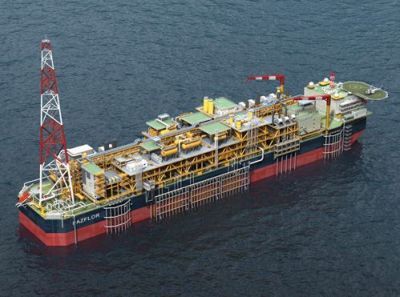
Total, operator of Block 17, announced that the giant Pazflor field offshore Angola has come on stream ahead of the initial schedule.
The Pazflor field lies 150 kilometres off Luanda in water depths ranging from 600 to 1,200 metres and has estimated proved and probable reserves of 590 million barrels. The field will gradually ramp up to its full production capacity of 220,000 barrels per day over the coming months.
“Pazflor’s start-up, several weeks ahead of schedule and within budget, is a remarkable achievement of the teams involved. The support and trust of Sonangol, our concession holder and partner, also made an invaluable contribution to our efficiency” says Yves-Louis Darricarrère, President Exploration & Production at Total. “Pazflor required a development effort on the same scale as the field. Paving a way with new technologies, the project showcases Total’s expertise in highly complex environments. The project facilities have been designed and thoroughly tested in accordance with the strictest health, safety and environmental standards. This is another step in the ongoing saga of our deep offshore feats, begun right here in Angola. Deepwater developments are a core driver of our future production growth.”
Pazflor comprises a vast subsea gathering network, the most complex ever built in Angola: 180 kilometres of lines tying in 49 subsea wells, 10,000 metric tons of subsea equipment and the giant Pazflor floating production, storage and offloading (FPSO) vessel. Held in position by 16 subsea mooring connectors, with its 325 metres long, 62 metres wide and a weight of more than 120,000 metric tons, the FPSO is the largest in the world. It can store up to 1.9 million barrels of oil that is then exported to tankers via an offloading buoy. The associated gas is reinjected into the reservoir, but could also be exported to the Angola LNG plant once the latter becomes operational.
A key technical challenge was producing two very different grades of oil from four separate reservoirs. Producing the heavy, viscous oil from the three Miocene reservoirs, which account for two-thirds of the reserves, and the related flow assurance constraints, represented a major challenge. The gas has to be separated from the liquids on the seabed so that the viscous liquids can then be pumped to the surface. The design and installation of subsea gas-liquid separation units and pumps are a world first on this scale. The pumps were purpose designed and tested for Pazflor.
Total’s wholly owned subsidiary Total E&P Angola operates Block 17, with a 40% interest, while Sonangol is the concession holder. The other partners are Statoil ASA (23.3%), Esso Exploration Angola (Block 17) Limited (20%) and BP Exploration (Angola) Ltd (16.67%).
Total Exploration & Production in Angola
Total has been present in Angola since 1953. In 2010, the Group’s operated production in Angola averaged 460,000 barrels of oil equivalent per day (boe/d) and its SEC equity production amounted to 163,000 boe/d. Most of this production comes from blocks 17, 0 and 14.
Total’s main asset in Angola is deepwater Block 17, which it operates with a 40% interest. The deep offshore block contains four major hubs: in addition to Pazflor, they are Girassol-Rosa and Dalia, which are currently in production, and CLOV (Cravo, Lirio, Orquidea and Violeta), whose development was recently launched. The Pazflor start-up will make Total the leading operator in Angola.
The Group also operates the ultra-deepwater Block 32, in which it holds a 30% stake. Twelve discoveries have confirmed the block’s potential for oil production, and conceptual development studies are underway on a first production area in the central southeastern sector of the block.
In addition, the Angola LNG project is building a liquefaction plant near Soyo to bring the country’s natural gas reserves to market. Total has a 13.6% interest in the project. The plant is under construction and will be supplied with associated gas from fields on blocks 0, 14, 15, 17 and 18. It is expected to come on stream in 2012.
We use cookies to improve your experience. By continuing to use our site, you accept our Cookies, Privacy Policy,Terms and Conditions. Close X